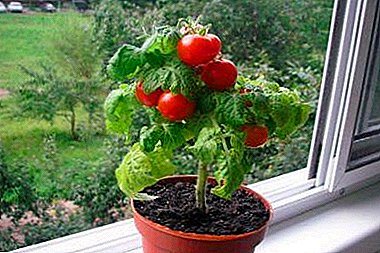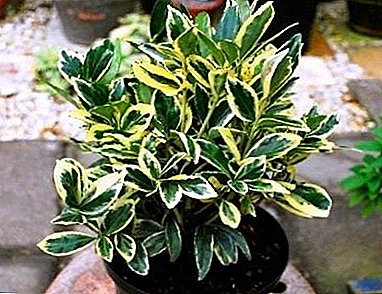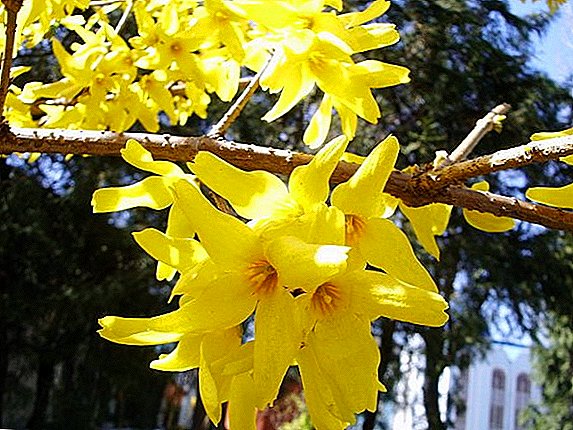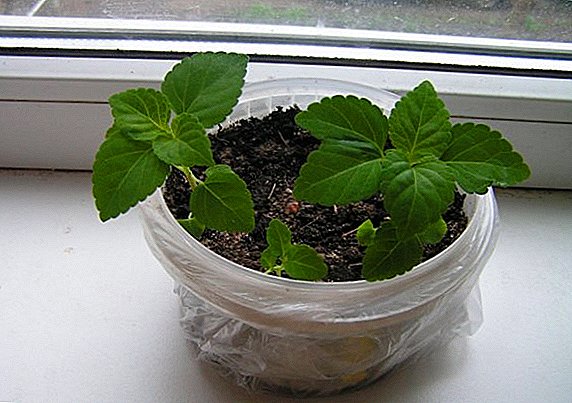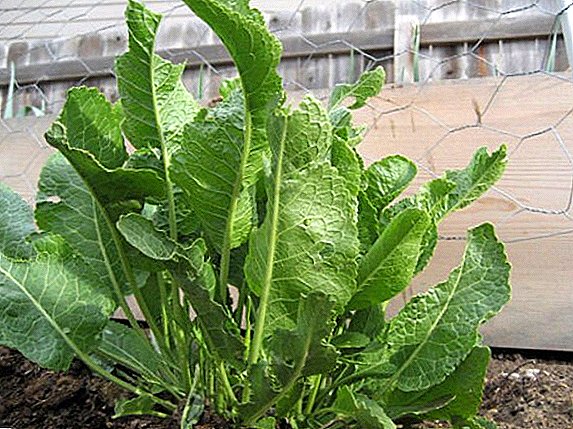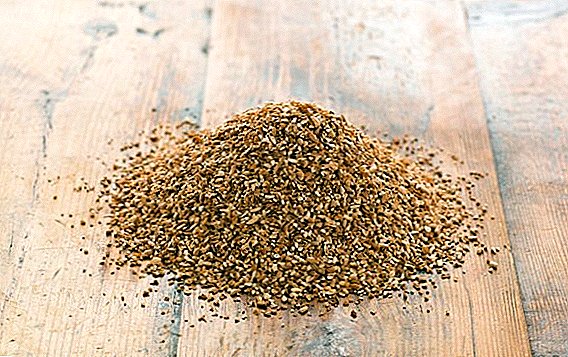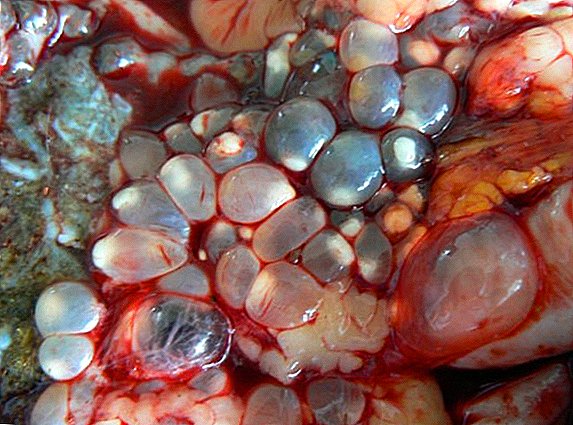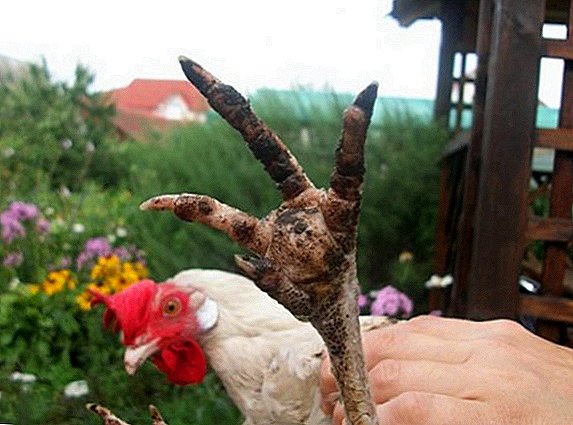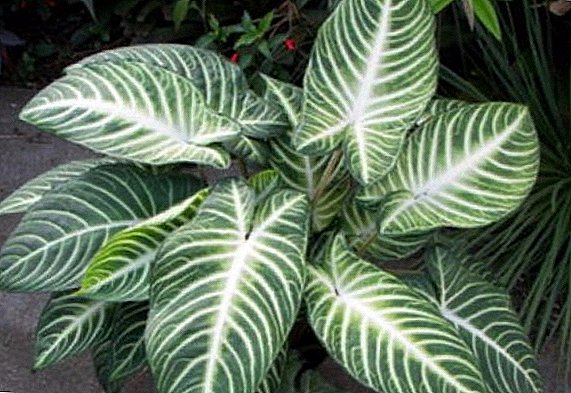 Xanthosoma can decorate with the look any house, office or other room. This large-leaf plant looks beautiful on the light background of the interior, both independently and in decorative compositions with flowering plants.
Xanthosoma can decorate with the look any house, office or other room. This large-leaf plant looks beautiful on the light background of the interior, both independently and in decorative compositions with flowering plants.
Plant description
Xanthosoma - a large ornamental deciduous plant, having beautiful large, green with white veins leaves that look like arrows.
Did you know? Xanthosoma is the Greek name consisting of two parts: “xanthos” means “yellow”, and “catfish” is translated as “body”.
This is a herbaceous perennial plant from the aroid family with a thick short stem and a coarse rhizome. The xantosome genus has approximately forty species, ten of which have become its cultural representatives. Among them the most common are the following types:
Learn more about other members of the aroid family: Caladium, Alokazia, Anthurium, Dieffenbachia, Monstera, Scinapsus, Calla, Aglaonema and Spathiphyllum.
powerful (it can be up to one meter in height, with a dark upper part of the leaf and a light lower one); 
Linder (with white lines on the top of leaves up to 40 cm long); 
purple (on top of its leaves are purple, below - with a blue tint); 
dark green (large leaves, dark green in the middle, lighter at the edges) and other species.  The xanthosoma in height can reach 1.5 m, the length of the leaves is 45 cm, and the width is 35 cm. Each of these leaves grows on a separate, long, grooved petiole. All leaves are leathery, divided into lobes, motley, often spotty.
The xanthosoma in height can reach 1.5 m, the length of the leaves is 45 cm, and the width is 35 cm. Each of these leaves grows on a separate, long, grooved petiole. All leaves are leathery, divided into lobes, motley, often spotty.
Occasionally, the xanthosoma can produce inconspicuous flowers - they are small, do not have a perianth, are combined into a cob, which is enveloped in a kind of white, yellowish, mauve, light green or creamy veil of oblong or oval form that has grown together with it.
In the rooms xanthosome practically does not bloom. Its tubers and petioles are yellowish inside.
Important! On one plant there are four to eight leaves, each of which lives for several months. Their quantity is determined by the quality of care; as soon as a young leaf appears, the old one dies off.
Growing conditions
Xanthosoma grows rather quickly. Feels comfortable in any kind of premises.
Did you know? Xanthosome came to us from the tropical part of Central America and the surrounding islands. Here, as well as in some parts of Asia and Africa, its roots and leaves are boiled as food, since the raw juice of this plant is poisonous.

Placement, temperature, light
Half-shaded premises with a high level of humidity and a constant temperature of not less than +18 ° C are ideal conditions for maintaining the xanthosoma and maintaining its beautiful appearance and healthy state. In order for the plant to feel comfortable, it needs a sufficiently warm indoor temperature in winter, not lower than +15 ° C, and in hot periods it should be protected from direct sunlight. Xanthosoma loves lighting, but diffused light fits best for her.
Optimal substrate
For an xanthosoma, the soil is ideal, consisting of a mixture of turf land, peat, and leaf soil in equal parts with the addition of sand in an amount two times smaller than each of the main components.  Approximately 20 g of ammonium nitrate, 10 g of potassium chloride and superphosphate are added to approximately 10 l of the mixture, because the plant needs soil rich in nutrients. Substrate should not be very saturated with moisture, without its stagnation. Also, for better air penetration into the soil, add small pieces of brick, dry mullein and charcoal. At the bottom of the pots need to drain the drainage layer.
Approximately 20 g of ammonium nitrate, 10 g of potassium chloride and superphosphate are added to approximately 10 l of the mixture, because the plant needs soil rich in nutrients. Substrate should not be very saturated with moisture, without its stagnation. Also, for better air penetration into the soil, add small pieces of brick, dry mullein and charcoal. At the bottom of the pots need to drain the drainage layer.
Peculiarities of care
Xantosome does not need special care. It should be watered moderately, especially in the winter, avoiding stagnant moisture for the plant. Abundant watering and frequent spraying of leaves are necessary for xantosome in a very hot period. Watering is best done in the first half of the day with separated water at room temperature.  Young xanthosomes need to be transplanted every year, preferably in the spring, but older plants can carry out this procedure once every few years.
Young xanthosomes need to be transplanted every year, preferably in the spring, but older plants can carry out this procedure once every few years.
Important! Feed every two weeks xanthosome only needed during the period of active growth. The fertilizing should consist of mineral substances: 2 g of salts per 1 l of water. Such a fertilizer is useful to alternate with a mullein, diluted with water in a ratio of 1: 10. Before each feeding process, the soil must be watered.
Reproduction of xanthosoma
Xantosome propagates by rhizome division. The root of the mother plant is divided into several parts, each part is planted in the soil, the composition of which is the same as for adult plants. For each separate part use a separate pot. But more often, the xanthosoma is propagated vegetatively with the help of root suckers formed from adventitious buds that are found on the mother plants.
The young processes are cut from the mother plant. Place the slices to sprinkle with charcoal. Cut off processes are planted in peat, which is pre-mixed with sand. For better development of the root system, it is necessary to maintain the temperature within + 20-24 ° С. When young xanthosoma begin to grow, they are transplanted into pots filled with a mixture for adult plants, consisting of peat, turf and leaf soil with the addition of sand.  With one xanthosoma can be cut for the year to thirty shoots. After a month or two, they can green the room, and after a couple of months they themselves begin to appear their offspring, suitable for reproduction.
With one xanthosoma can be cut for the year to thirty shoots. After a month or two, they can green the room, and after a couple of months they themselves begin to appear their offspring, suitable for reproduction.
Growing problems
Xanthosoma likes a high enough temperature, but if you overdo it in this regard, then the edges of the leaves will start to dry and turn brown. In this case, all such leaves must be completely cut off and all measures taken to ensure that the xanthosoma has an increased level of moisture.  If placed in bright sunlight, the leaves will begin to become covered with brown spots. After identifying the first signs, the xanthosoma must be rearranged to a more suitable place, bright, but not sunny. Yellowing the leaves without their apparent wilting indicates a deficiency of nutrients in the soil.
If placed in bright sunlight, the leaves will begin to become covered with brown spots. After identifying the first signs, the xanthosoma must be rearranged to a more suitable place, bright, but not sunny. Yellowing the leaves without their apparent wilting indicates a deficiency of nutrients in the soil.
If water droplets appear on the tips of the leaves, then there is excessive humidity in the room. If the species xanthos with motley leaves, they become monotonous, then this should be regarded as a sign of insufficient lighting. With excessive moisture, the roots rot, and on the leaves there may appear signs of late blight - oily spots.
The plant must be treated with copper-soap solution, "Fundazole" or "Benlat" for the purpose of treatment. Sometimes xantosome leaves are affected by spider mites. If this happens, then it is necessary to urgently apply special insecticidal preparations against this pest.
Spider mites can most often infect garden crops such as: eggplants, cucumbers, tomatoes, peppers, and pumpkins.
With the right approach, the care of xanthosome will not present the slightest difficulty. This rather unpretentious plant will not bring any trouble if you know the simplest rules of its cultivation, and will be able to decorate the design of any room with its appearance.


